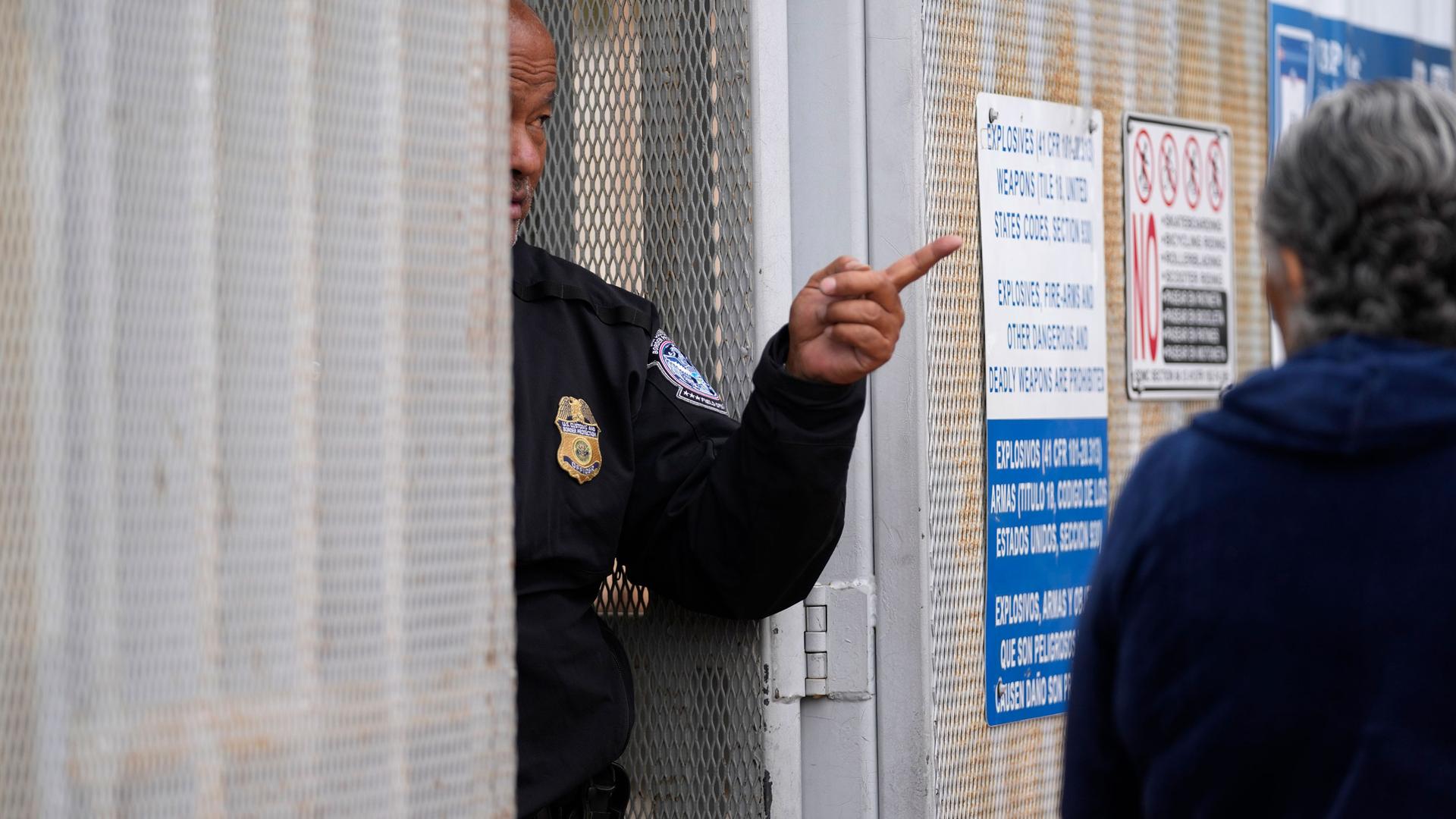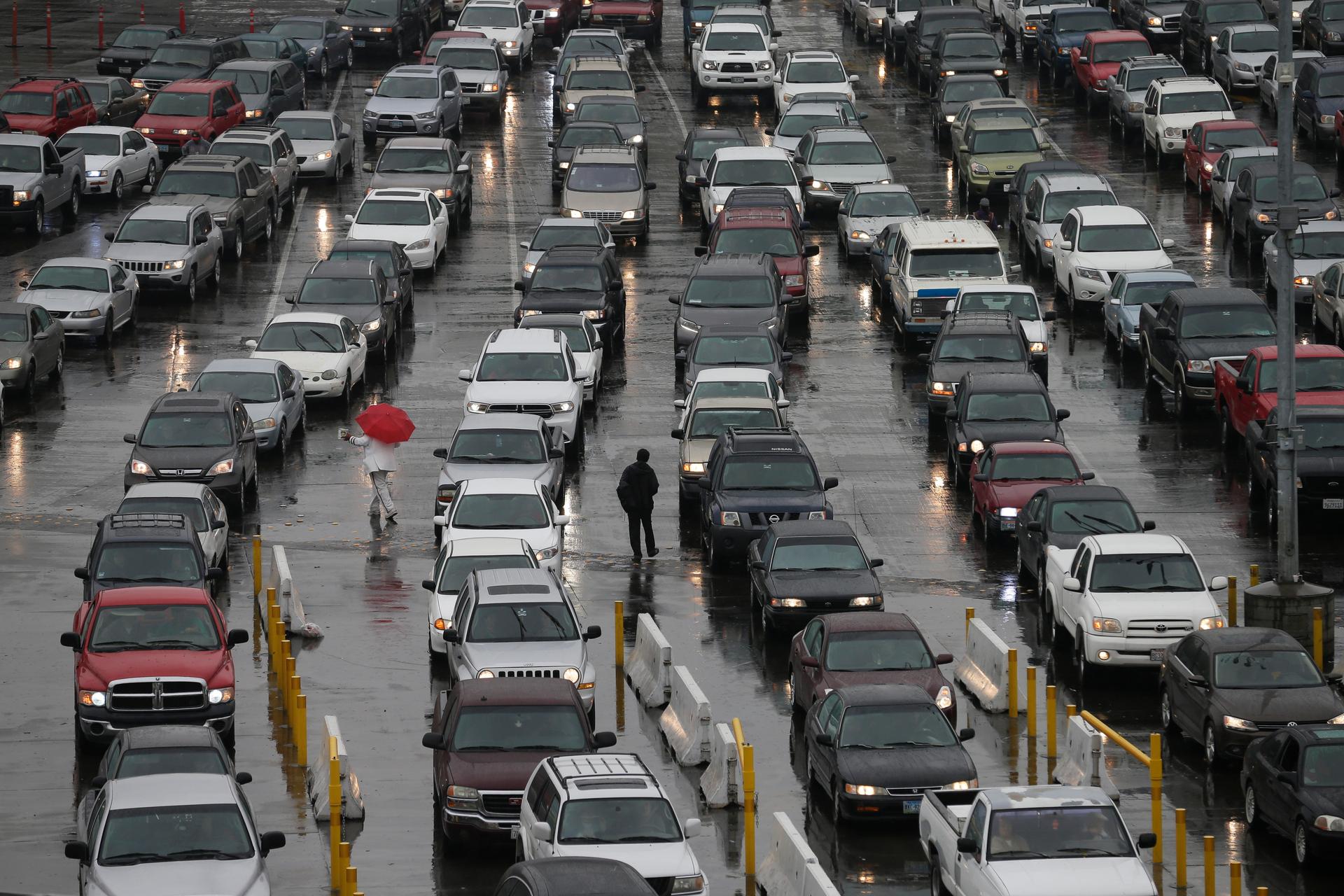Crossing borders: Living in one country, going to school in another
When you hear about the US-Mexico border, it’s often in reference to migration and protocols designed to keep people from crossing the border — walls, barricades, asylum hearings.
But for thousands of students who live in Mexico and go to school in the US, crossing the border is just part of the daily commute.
Carlos Tenorio knows this routine.
He has dual US and Mexican citizenship, lives in Tijuana, Mexico, and attends Southwestern College in Chula Vista, California, just east of San Diego.

Thousands of students like Tenorio who attend US colleges and universities reside in Mexico. Many live with their families and living costs are cheaper.
But when border wait times can be two to four hours long, it takes a special dedication to get to class each day.
For Tenorio, who doesn’t have a car — and the buses he would otherwise take are out of commission — it means walking to school.
“I need to get to the border and then walk to the school and it’s a pretty long distance,” he said.
Tenorio said many students check in with an online Facebook community to get the most accurate wait times at the border on a daily basis.
Wait times can also be affected by what Tenorio called “secondary inspections.”
“It often happens that they send you to secondary inspection also just randomly.”
“It often happens that they send you to secondary inspection also just randomly. And I mean, you’re waiting for hours to cross the border and they send you randomly to secondary inspection and they have you waiting for 40 minutes. And that’s really, really messed up,” Tenorio told The World.

He said he doesn’t know what the authorities are looking for when they do the secondary inspection.
“They check your pockets, they check your bags and they have you see it and they just make you wait, they don’t tell you anything else.”
Joanna Esser, who teaches English as a second language at Southwestern College, works with many students who live in Mexico and cross the border daily to study in the US.
She said that she hears about a lot of challenges similar to what Tenorio described. And in general, student arrival times are often unpredictable.
“I get WhatsApp calls and messages at all times…so we’re always trying to be mindful of the challenges that students face in arriving on time and being there for the entire duration of the class.”
“We have WhatsApp chats so students can contact us. I get WhatsApp calls and messages at all times: ‘Teacher, I’m going to be late for class.’ So, we’re always trying to be mindful of the challenges that students face in arriving on time and being there for the entire duration of the class,” she said.
For her and other teachers, it means constantly monitoring what is happening at the border. And sometimes, shifting the way class is run — avoiding scheduling a quiz at start time, for instance.
That’s different from how things were done during her college years.
Back then, “You know, there was this pop quiz to make sure that you’re there on time,” she said. “We know that that wouldn’t be equitable.”
But that’s not all. She added that bus strikes and family emergencies can also impact student learning.
“They often cross the border really early to go to work or, or they, you know, their families have to go to work.”
About 900 students at Southwestern currently reside in Mexico, Esser said, and about 46% said it takes them more than two hours to arrive on campus.
In response, the school plans to host its first-ever graduation commencement ceremony in Tijuana.
Until then, students like Tenorio, who also holds a job in the US, continue to wake up at about 8 to reach campus for a first class at 11.
Tenorio said that what motivates him is his love of filmmaking.
“I hope I make something big one day, something that really, like, identifies me, something that says my name on it — a film or a television show or something that people would see.”
